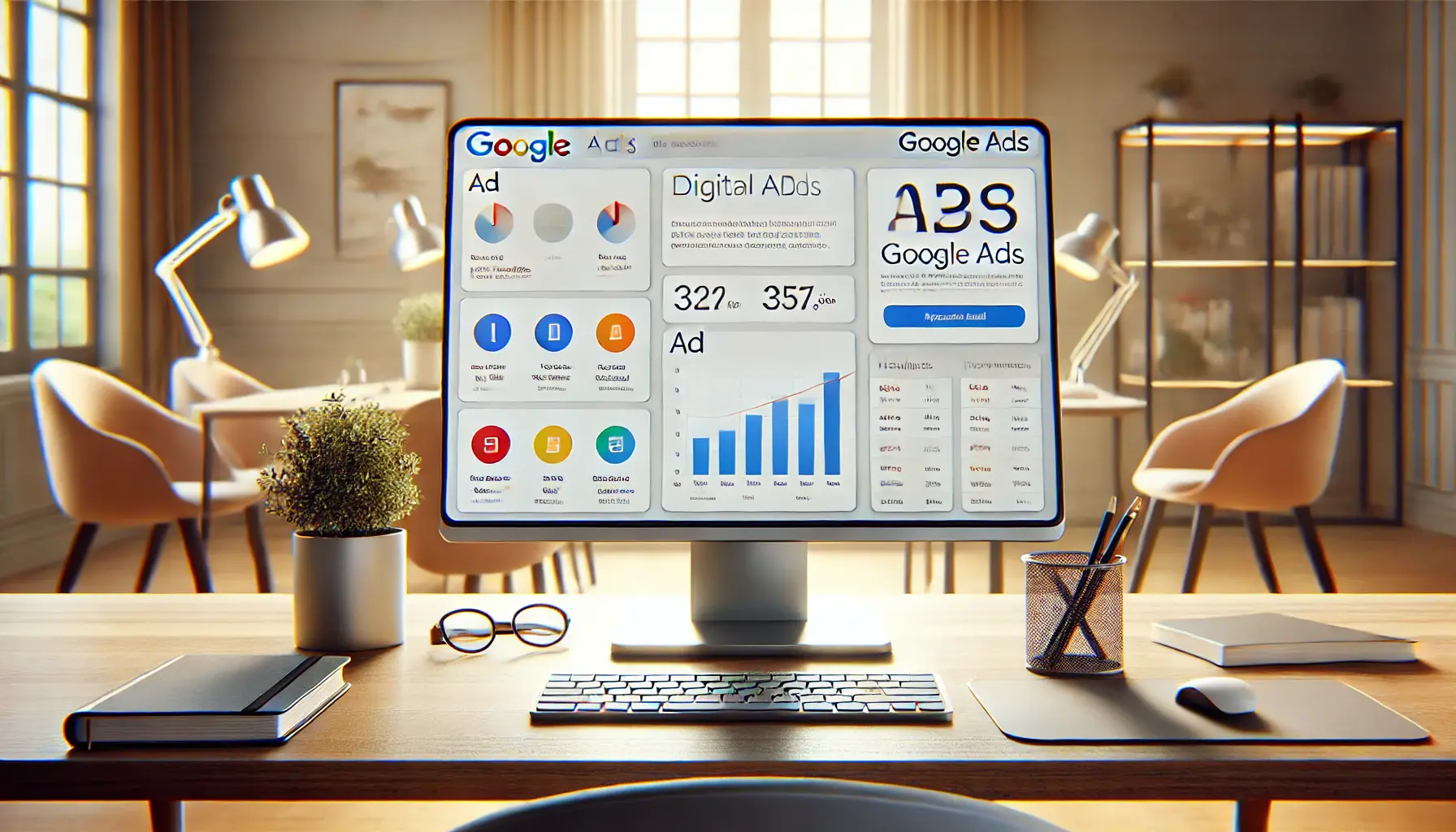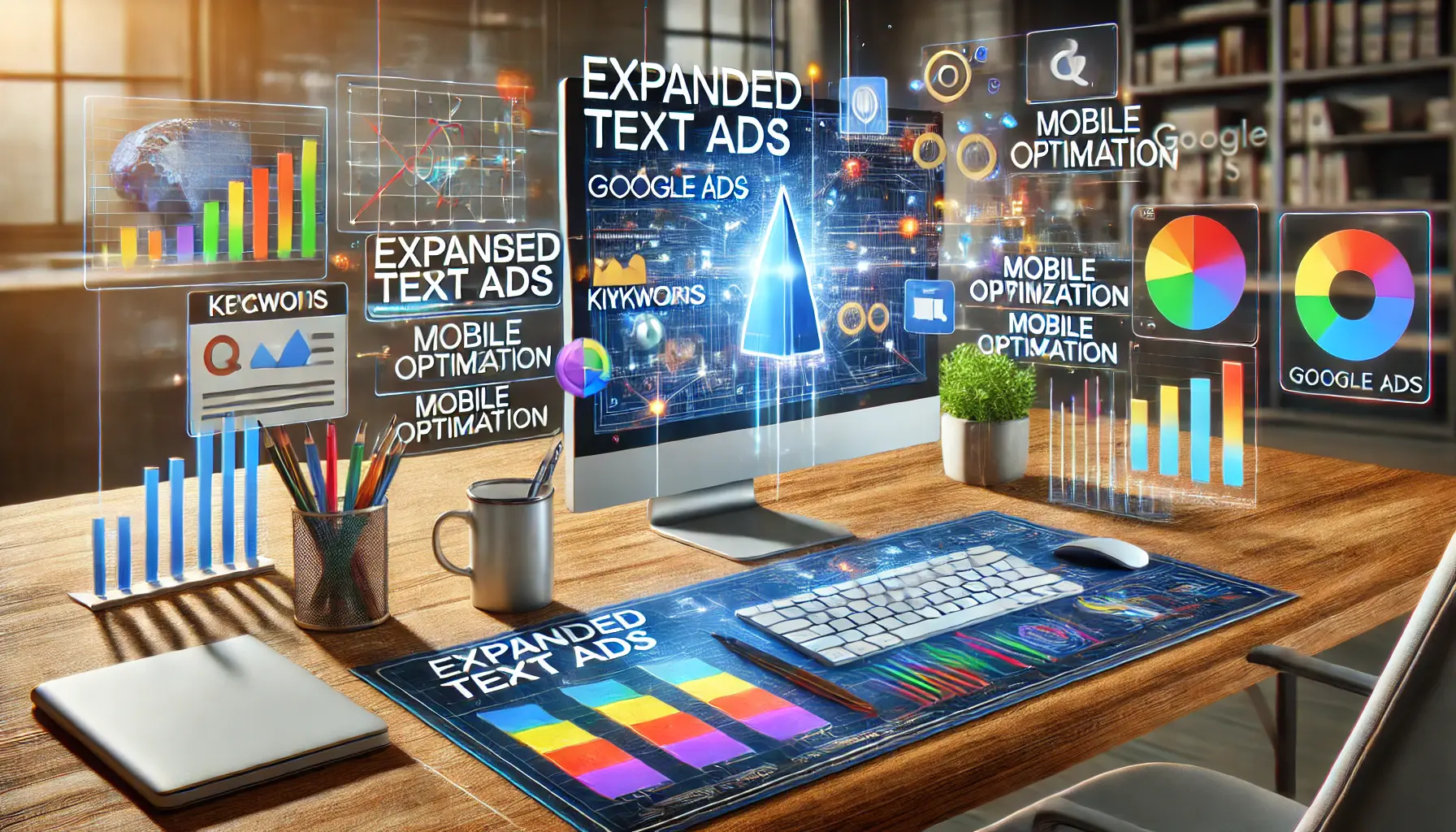In the fast-changing digital advertising landscape, it’s an advantage to know every new development.
For the year 2024, one of these new developments is a set of new features for Expanded Text AdsA type of Google Ads format allowing advertisers more space for headlines and descriptions. (ETAs) on Google Ads.
These will afford more flexibility and better results to advertisers in running their ad campaigns.
This article delves into these new features, offering insights on how to leverage them for optimal advertising performance.
- Introduction to Expanded Text Ads in 2024
- Exploring the 3 New Features of Expanded Text Ads
- Best Practices for Utilizing Expanded Text Ads
- Comparing Expanded Text Ads with Responsive Search Ads
- Future Trends in Expanded Text Ads
- Mastering Expanded Text Ads: Key Takeaways for 2024
- Frequently Asked Questions about Expanded Text Ads
Introduction to Expanded Text Ads in 2024
Expanded Text Ads have been a cornerstone of Google Ads, allowing advertisers to craft more detailed and engaging messages.
In 2024, ETAs have undergone significant updates to better align with the dynamic nature of digital marketing.

Explore the journey of Expanded Text Ads, from basic text ads to dynamic, personalized ad formats in digital marketing.
Evolution of Expanded Text Ads
Since their inception, Expanded Text Ads have evolved to meet the changing demands of advertisers and consumers.
Initially, ETAs provided more space than standard text ads, enabling advertisers to include additional information.
Over time, Google has introduced features such as multiple headlines and extended description fields, enhancing the potential for more compelling ad copy.

Highlighting the pivotal role of Expanded Text Ads in driving engagement and visibility in today’s digital advertising landscape.
Importance in Current Digital Advertising Landscape
In today’s digital advertising environment, where user attention is fragmented across various platforms, the ability to deliver concise yet informative messages is paramount.
This is exactly the capability provided by Expanded Text Ads, where there is enough space given to a publisher to highlight key aspects of their products or services.
The recent updates in 2024 further enhance this by introducing features catering to the need for more personalized and engaging advertisements.
Expanded Text Ads have been updated in 2024 to better align with the dynamic nature of digital marketing, offering advertisers improved tools for crafting engaging messages.

Illustrating the innovative features of Expanded Text Ads in 2024, including interactive elements and advanced automation tools.
Exploring the 3 New Features of Expanded Text Ads
In 2024, Google Ads has introduced three significant enhancements to Expanded Text Ads, aiming to boost advertiser flexibility and engagement.
Let’s delve into these features and understand how they can elevate your advertising strategy.

Highlighting the interactive features of Expanded Text Ads, including carousels and expandable descriptions for enhanced engagement.
1. Interactive Elements for Enhanced User Engagement
Because users are more interactive with such ads, Google has added an interactive feature to Expanded Text Ads.
These features enable users to interact directly with the ad for better click-through rates and conversion opportunities.
- Carousel Ads: Advertisers can now showcase several images or products within one ad format, allowing users to swipe through offerings.
- Expandable Descriptions: Descriptions can expand upon user interaction, providing additional information without cluttering the initial ad view.
By incorporating these interactive features, your ads become more dynamic and appealing, fostering a more engaging user experience.

Illustrating the power of advanced automation and dynamic ad creation with real-time adjustments and A/B testing in Google Ads.
2. Advanced Automation and Dynamic Ad Creation
Automation continues to play a pivotal role in digital advertising.
The latest updates to Expanded Text Ads introduce advanced automation tools that streamline ad creation and optimization processes.
- Dynamic Keyword Insertion: Automatically inserts relevant keywords into your ad copy, ensuring greater relevance to user search queries.
- Automated A/B Testing: Google Ads now facilitates automatic testing of different ad variations, identifying top-performing versions without manual intervention.
Leveraging these automation features allows advertisers to maintain ad relevance and performance with minimal effort, optimizing campaigns efficiently.
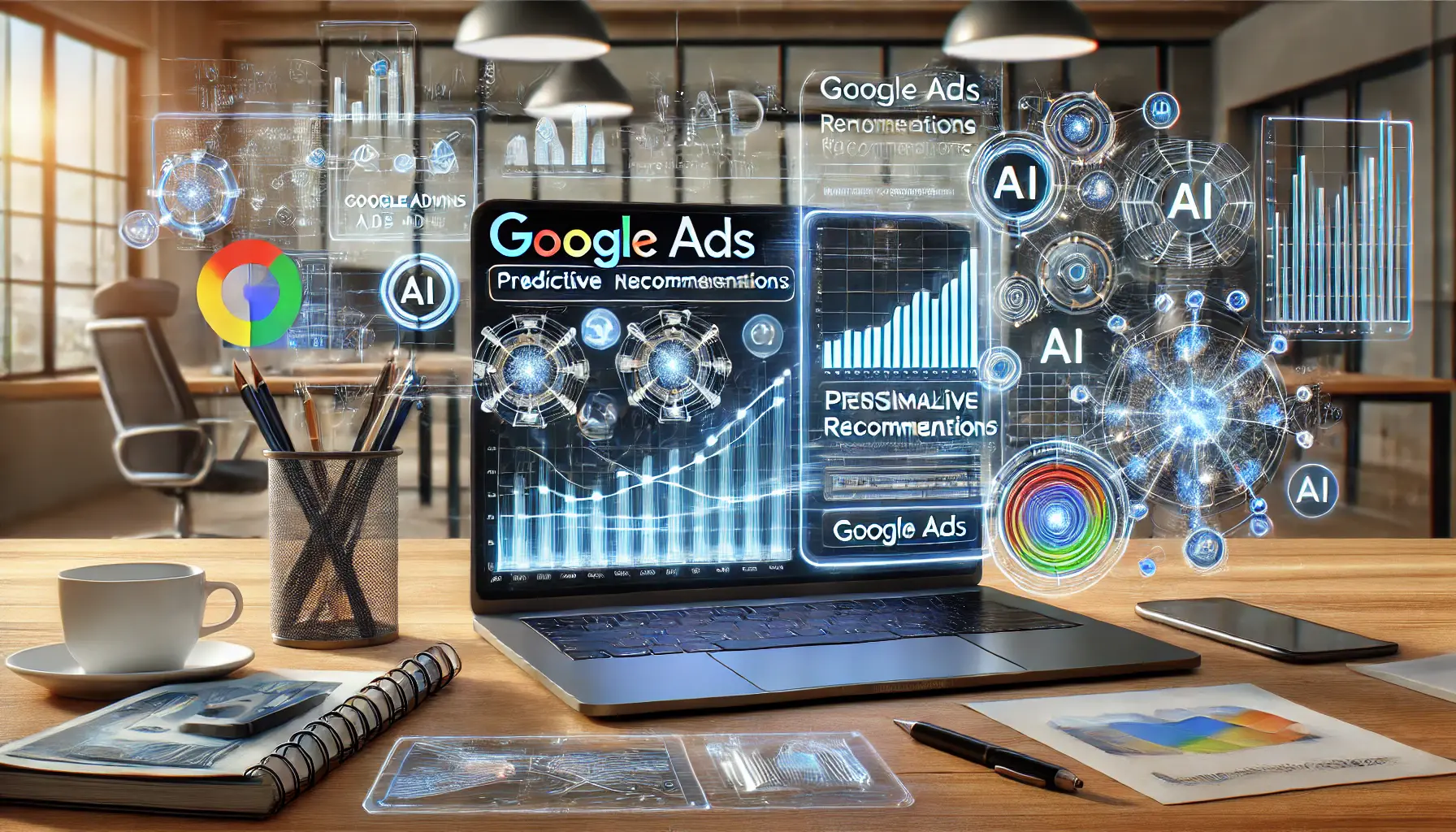
Illustrating the integration of AI-powered tools in Google Ads, enhancing ad performance through predictive analytics and dynamic optimization.
3. Integration with AI-Powered Tools
AI is set to disrupt the conventional features of advertising.
Beginning in 2024, Expanded Text Ads include support for AI-powered tools, which provide more profound insights and richer personalization of ads.
- Predictive Analytics: AI identifies user behavior patterns to predict future actions, enabling better targeting of ad placements.
- Personalized Ad Content: AI-driven algorithms customize ad content based on individual user preferences and browsing history.
By embracing these AI integrations, advertisers can deliver more personalized ads, closely aligned with the interests of users to increase the chances of engagement.
2024 introduces three significant updates to Expanded Text Ads: interactive elements, advanced automation, and AI-powered tools, designed to boost advertiser engagement and efficiency.
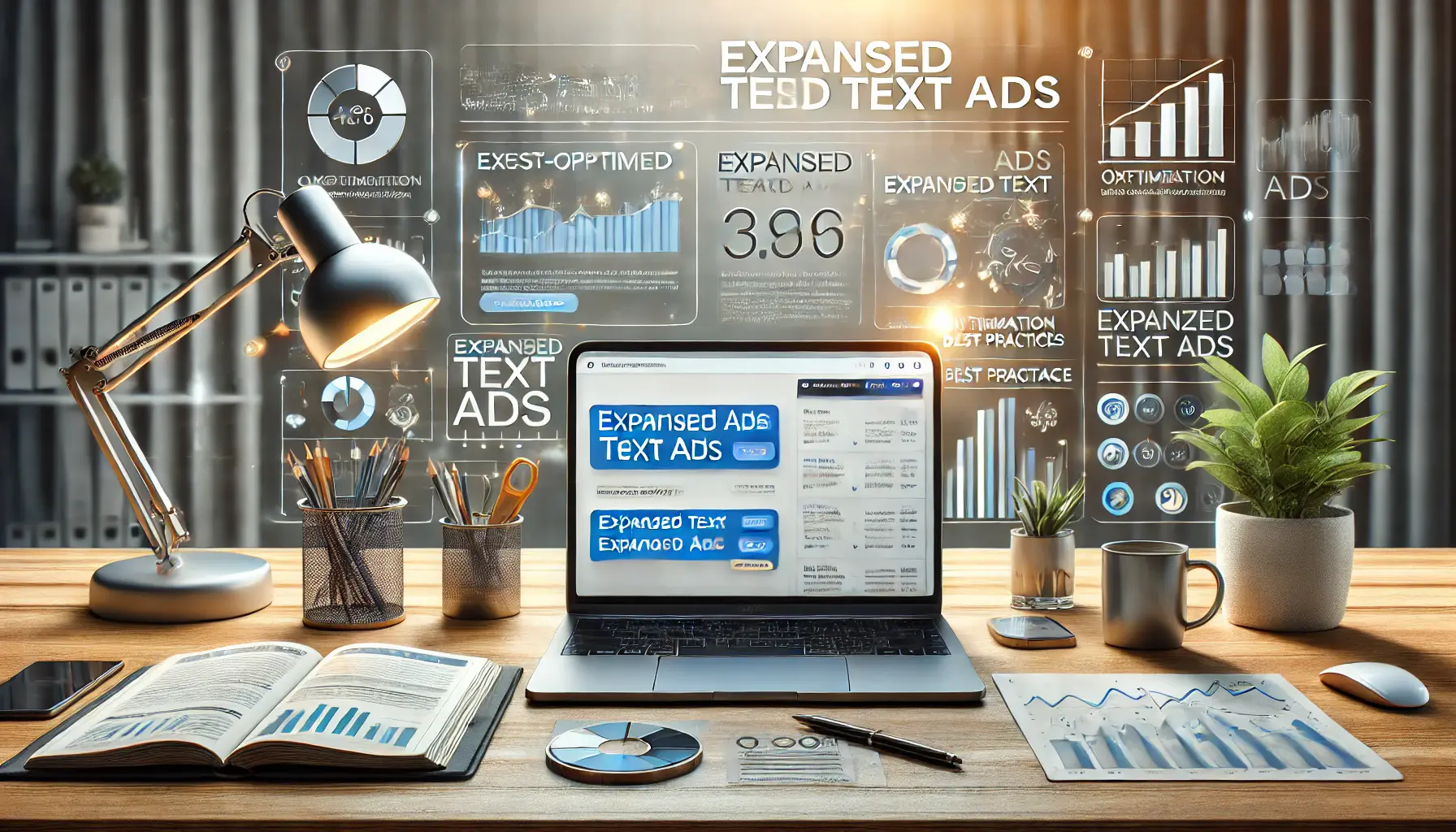
Illustrating best practices for utilizing Expanded Text Ads, emphasizing optimization and data-driven strategies.
Best Practices for Utilizing Expanded Text Ads
To maximize the effectiveness of Expanded Text Ads in 2024, it’s essential to implement strategies that enhance visibility and engagement.
Here are key practices to consider:

Illustrating the thoughtful process of crafting compelling headlines and descriptions for successful digital advertising.
Crafting Compelling Headlines and Descriptions
Your ad’s headline is the first point of contact with potential customers.
To make it impactful:
- Incorporate Relevant Keywords: Including keywords that match users’ search queries will help with ad relevance and Quality Score.
- Highlight Unique Selling Propositions (USPs): Mention what makes your product or service unique to grab users’ attention.
- Use Action-Oriented Language: Call users to action with phrases like “Discover Now” or “Get Started Today.”
In descriptions, provide clear and concise information that complements your headlines, reinforcing the value proposition.

Illustrating the effective use of ad extensions like sitelinks and callout extensions to enhance digital advertising campaigns.
Leveraging Ad Extensions Effectively
Ad extensions enhance your ads by providing additional information and increasing visibility.
Consider the following:
- Sitelink Extensions: Direct users to specific pages on your website, such as product categories or contact information.
- Callout Extensions: Highlight key offers or features, like “Free Shipping” or “24/7 Support.”
- Structured Snippet Extensions: Showcase specific aspects of your products or services, such as “Available Colors” or “Service Types.”
Implementing these extensions can improve ad performance by making your ads more informative and engaging.

Illustrating the process of optimizing ads for both mobile and desktop platforms to ensure effective digital marketing across devices.
Optimizing for Mobile and Desktop Platforms
With users accessing content across various devices, it’s crucial to ensure your ads are optimized for both mobile and desktop platforms:
- Responsive Design: Ensure your landing pages are mobile-friendly to provide a seamless user experience.
- Device Bid Adjustments: Analyze performance data to inform device bid adjustments, allocating budget to the most effective devices.
- Monitor Performance Metrics: Continuously review metrics such as click-through rates (CTRs) and conversion rates across devices to uncover opportunities for improvement.
By optimizing your ads for their respective platforms, you can engage with more users and enhance their overall experience.
Implementing compelling headlines, effective ad extensionsAdditional pieces of information that expand a standard Google ad, such as links or call buttons., and optimizing for mobile platforms are essential practices for maximizing the potential of Expanded Text Ads in 2024.
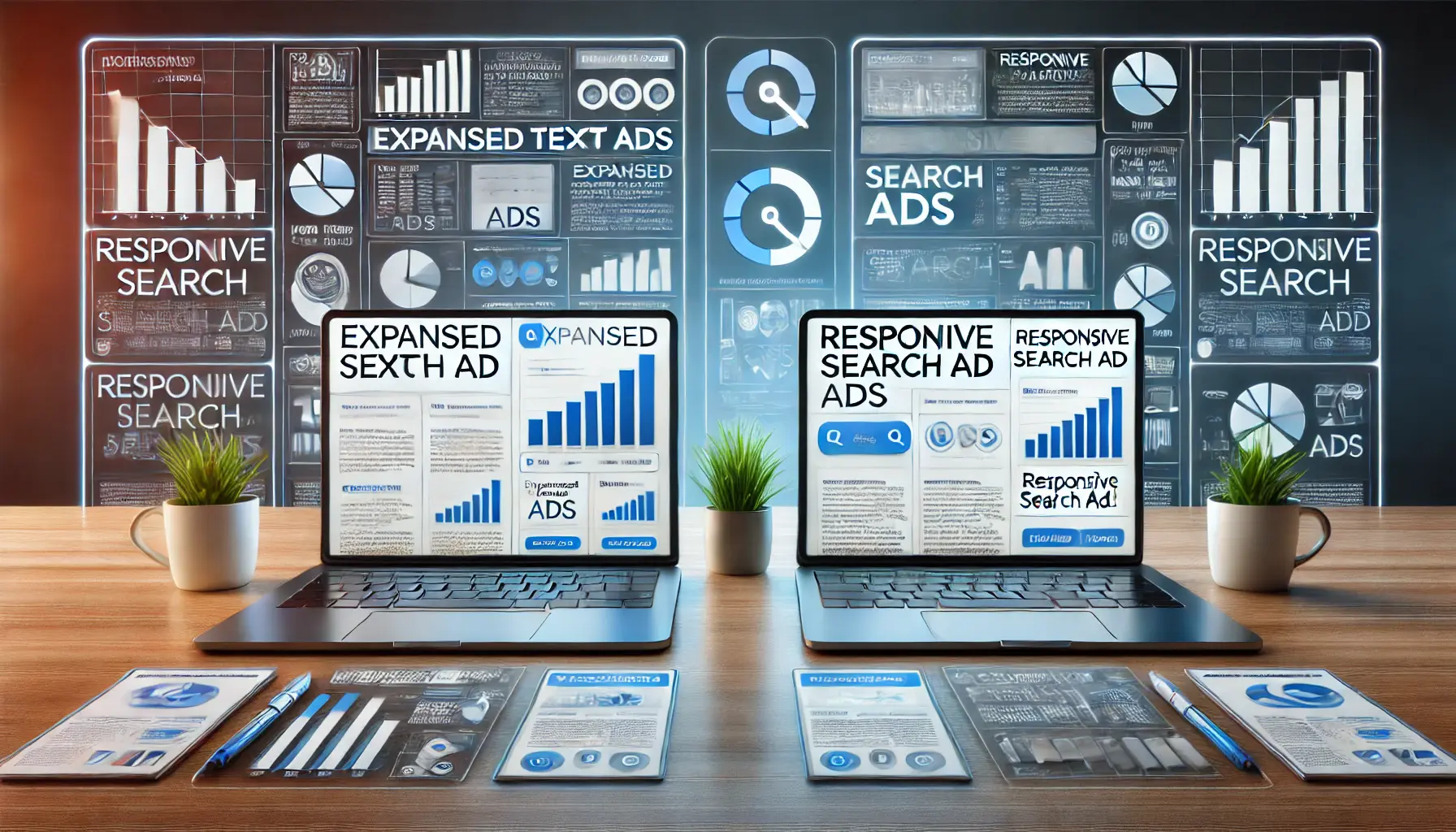
Illustrating the differences between Expanded Text Ads and Responsive Search Ads, highlighting their structure and dynamic capabilities.
Comparing Expanded Text Ads with Responsive Search Ads
In the realm of digital advertising, understanding the distinctions between Expanded Text Ads (ETAs) and Responsive Search AdsAn ad format that dynamically combines multiple headlines and descriptions to optimize performance. (RSAs) is crucial for optimizing campaign performance.
Both formats offer unique advantages and limitations that can influence your advertising strategy.

Highlighting the key differences between Expanded Text Ads and Responsive Search Ads, emphasizing their flexibility and control.
Key Differences Between ETAs and RSAs
While both ETAs and RSAs are designed to engage users through search results, they differ in structure and functionality:
- Ad Creation: With ETAs, advertisers manually fill in three headlines and two descriptions, allowing for a certain degree of personalization. RSAs, in contrast, let advertisers input multiple headlines and descriptions, with Google algorithms dynamically testing and combining them to deliver optimal performance.
- Flexibility: RSAs are more flexible, allowing up to 15 headlines and four descriptions, offering far greater combinations to match user queries. ETAs, on the other hand, have a fixed structure, limiting their flexibility.
- Control: ETAs give advertisers full control over the ad’s appearance, as headlines and descriptions are presented in a set order. RSAs rely on machine learning to determine the best combinations, which can make them less predictable.

Illustrating the advantages and limitations of Expanded Text Ads and Responsive Search Ads through visual elements like balance scales and icons.
Advantages and Limitations of Each Format
Both formats have their own advantages and limitations:
- Expanded Text Ads: Advantages
- Responsive Search Ads: Advantages
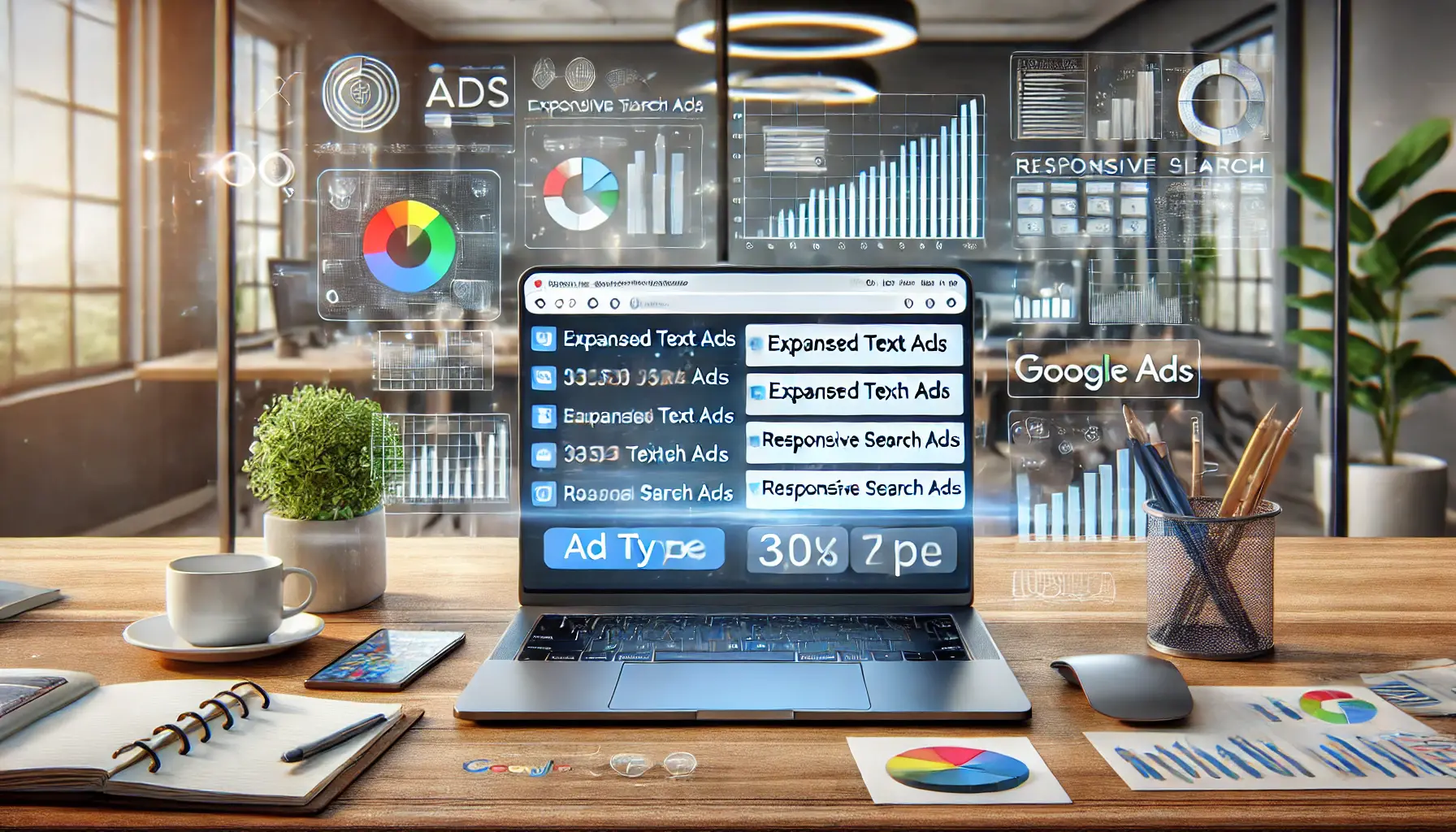
Visualizing the decision-making process for selecting the best ad type for a campaign, comparing Expanded Text Ads and Responsive Search Ads.
Choosing the Right Ad Type for Your Campaign
Selecting between ETAs and RSAs depends on your campaign objectives and resources:
- Consistency in Branding: If maintaining strict control over your brand’s messaging is critical, ETAs may be a better fit.
- Optimization and Flexibility: For campaigns aiming to leverage automation and test multiple ad variations, RSAs provide a dynamic solution.
- Resource Allocation: RSAs reduce the workload with automation, while ETAs require more hands-on management for customization and testing.
By understanding the peculiarities of each ad format, you can make informed decisions that align with your advertising goals and resources.
Understanding the differences between Expanded Text Ads and Responsive Search Ads helps advertisers choose the right format based on their goals, balancing control and flexibility.

undefined
Future Trends in Expanded Text Ads
As digital advertising continues to evolve, Expanded Text Ads (ETAs) are expected to undergo significant transformations.
Staying informed about these trends is crucial for advertisers aiming to maintain a competitive edge.

Visualizing the integration of AI and Machine Learning in digital advertising, highlighting AI algorithms and data analytics.
Integration of Artificial Intelligence and Machine Learning
The integration of AI and Machine LearningA branch of artificial intelligence focused on building systems that learn from and make decisions based on data. (ML) into Expanded Text Ads is going to change the process of creating and optimizing ads.
AI-powered tools can analyze vast volumes of data to predict user behavior, providing more personalized and effective ad content.
For example, AI can run A/B testingA method of comparing two versions of an ad or webpage to determine which performs better. automatically, dynamically changing ad elements for better performance.
This means advertisers will be able to devote more time and energy to higher-level strategic planning while AI performs the data-driven optimization.

Illustrating enhanced personalization and user targeting through data analytics, user profiles, and tailored ad content in digital marketing.
Enhanced Personalization and User Targeting
Future Expanded Text Ads will likely offer advanced personalization features, allowing advertisers to tailor ads to individual user preferences and behaviors.
By leveraging data analytics, ads can be customized based on factors such as browsing history, purchase patterns, and demographic informationData about the characteristics of a population, such as age, gender, or income..
This level of personalization aims to increase user engagement and conversion rates by delivering more relevant content to each user.
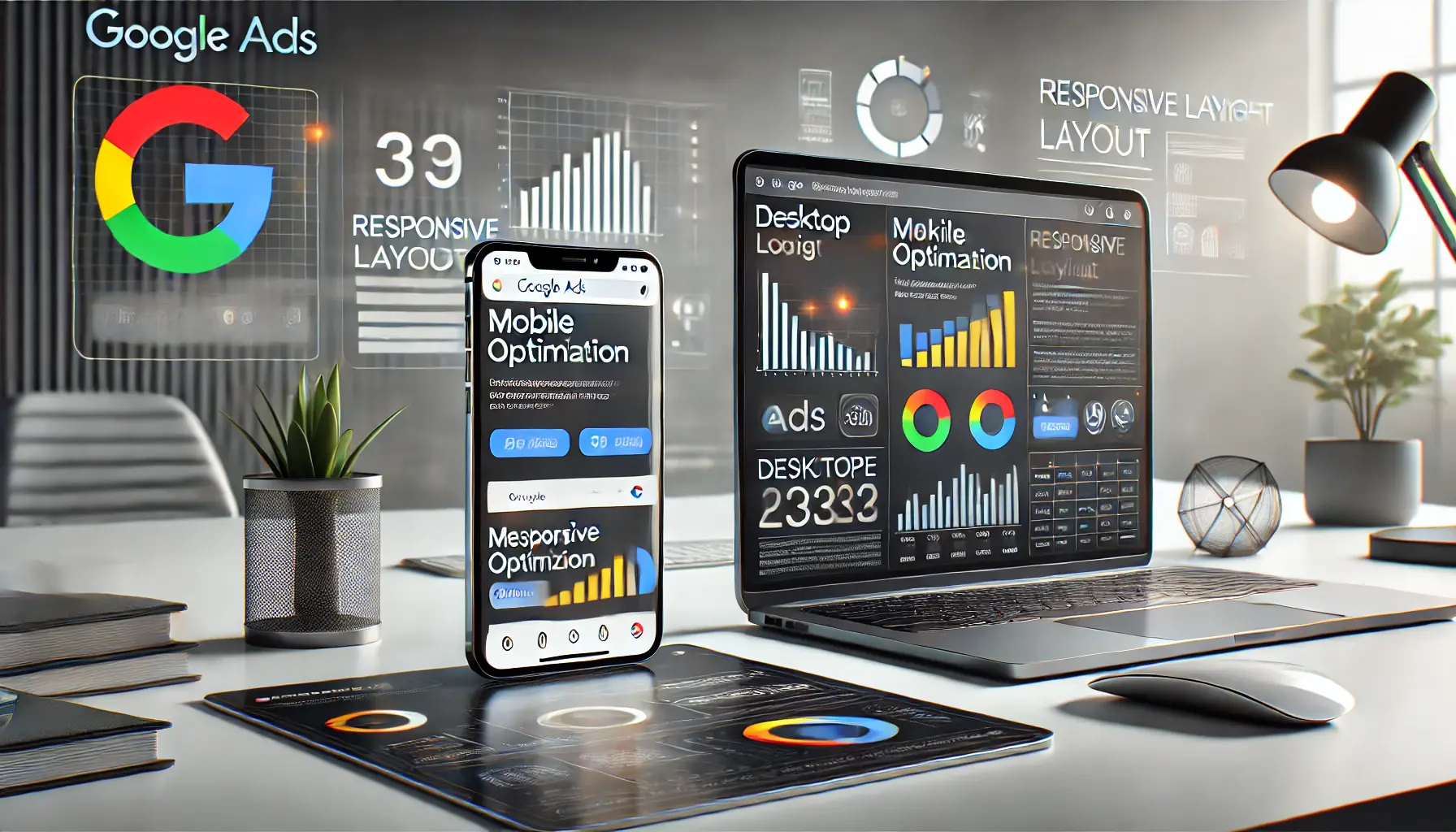
Illustrating the importance of mobile optimization in digital advertising, with mobile-optimized and desktop-optimized ads on different devices.
Emphasis on Mobile Optimization
With the growing dominance of mobile internet usage, optimizing Expanded Text Ads for mobile platforms is becoming increasingly important.
Future trends indicate a focus on creating mobile-friendly ad formats that ensure seamless user experiences across devices.
This includes responsive design elements and faster loading times, catering to the preferences of mobile users and enhancing overall ad effectiveness.

Illustrating the importance of adhering to data privacy regulations in digital advertising, with a focus on secure data handling and compliance.
Adherence to Data Privacy Regulations
With growing data privacy concerns, advertisers have to operate within stricter regulations that may affect how user data is collected or used.
Future Expanded Text Ads should implement transparent measures to comply with regulations requiring user consent.
Advertisers should stay up to date with legal requirements and adopt best practices to ensure user trust and avoid any possible fines.
The ability to follow these evolving trends will enable advertisers to adjust their strategies to take advantage of the emerging capabilities of Expanded Text Ads for continued success in the ever-changing digital advertising landscape.
Future trends in Expanded Text Ads include AI integration, enhanced personalization, mobile optimization, and adherence to data privacy regulations, shaping the next wave of digital advertising.
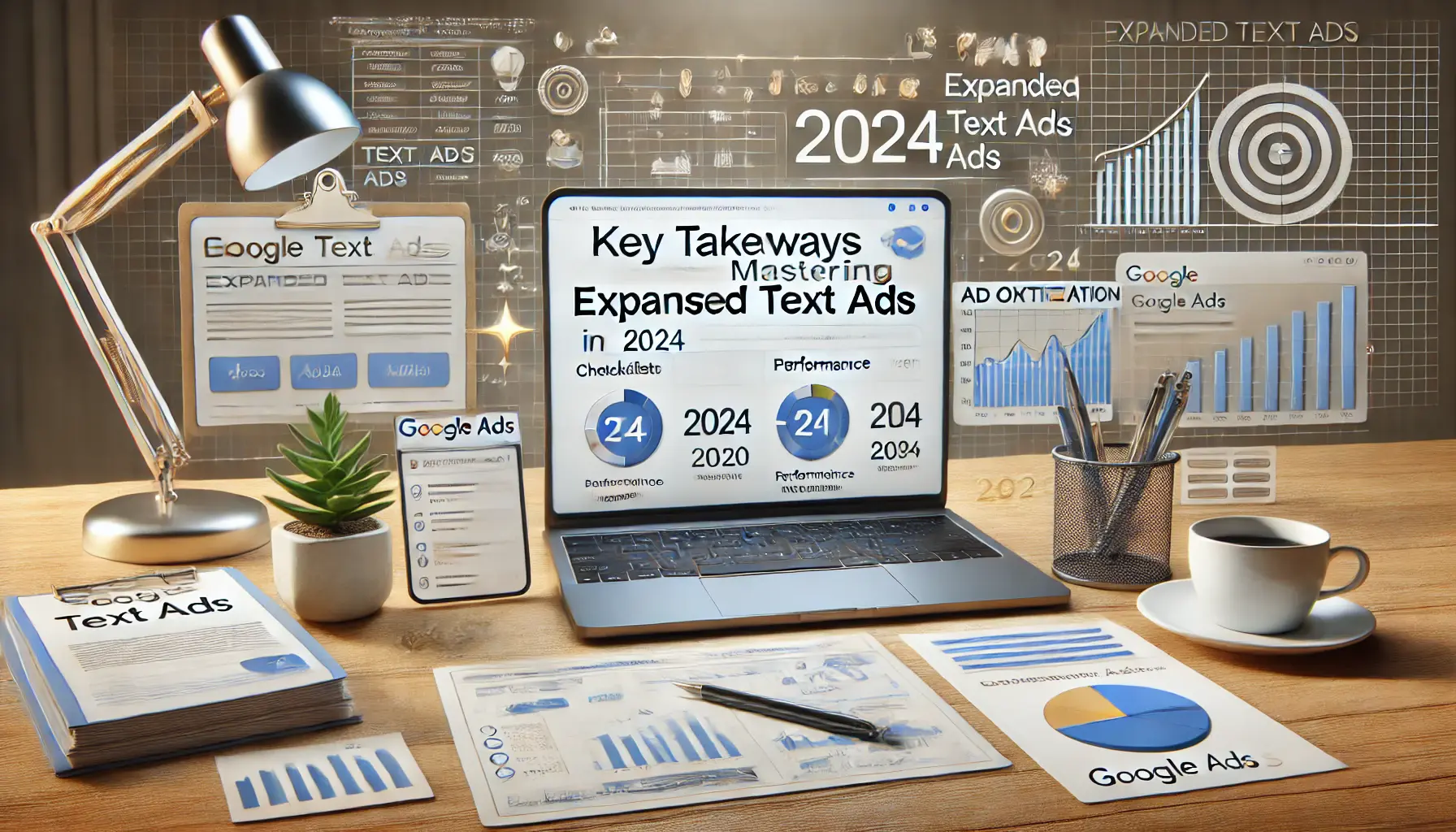
Visualizing the key takeaways for mastering Expanded Text Ads in 2024, with a focus on ad optimization strategies and campaign performance.
Mastering Expanded Text Ads: Key Takeaways for 2024
As digital advertising continues to evolve, mastering the nuances of Expanded Text Ads (ETAs) has never been more essential.
From understanding new features to implementing best practices and preparing for future trends, advertisers have a wealth of opportunities to maximize their campaign performance in 2024.
Here’s a comprehensive summary of the insights covered in this article.
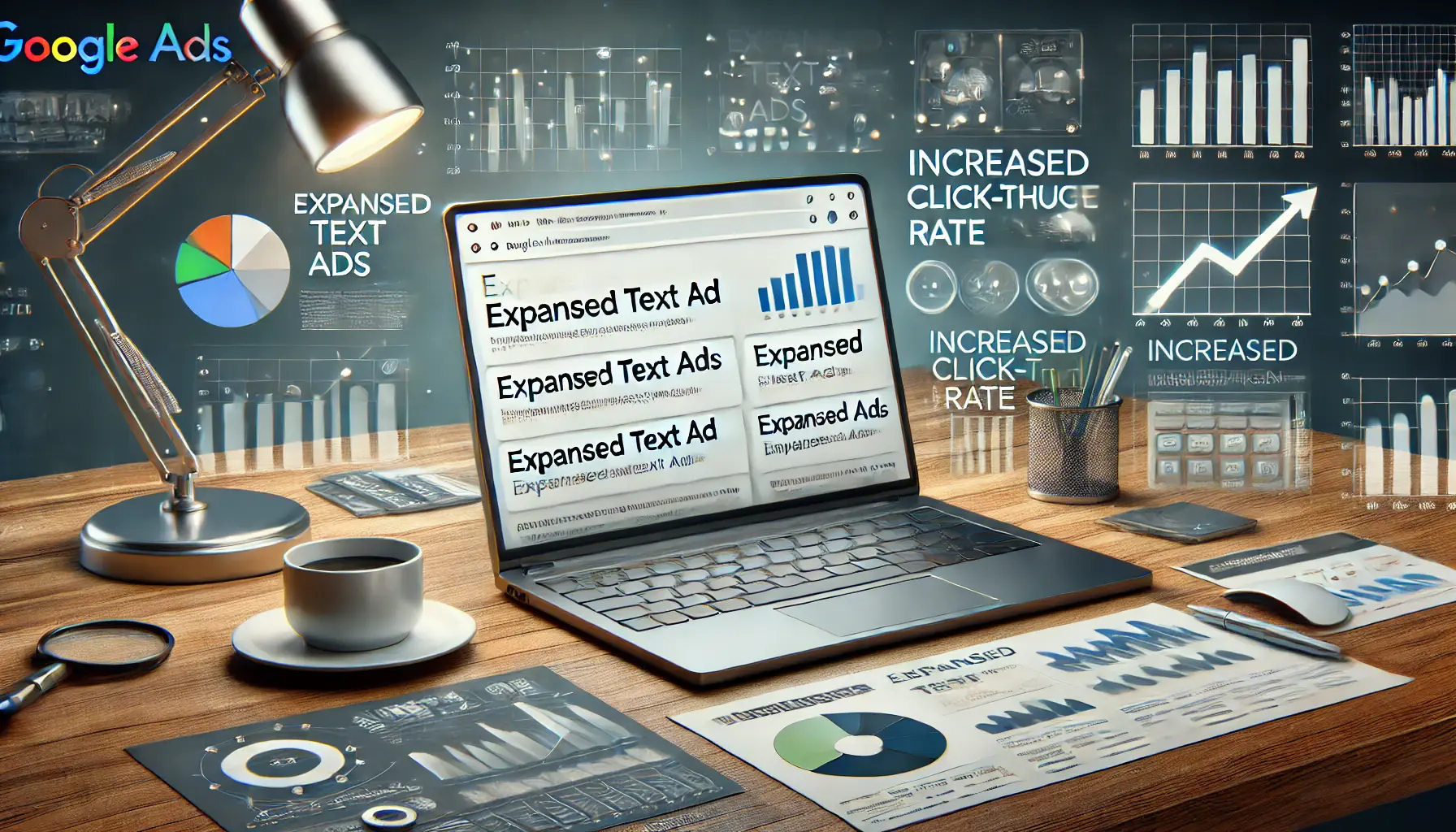
Illustrating the significance of Expanded Text Ads in digital marketing, highlighting their impact on campaign performance and user engagement.
Why Expanded Text Ads Matter
Expanded Text Ads provide advertisers with the ability to craft detailed, engaging messages that resonate with their target audience.
With updates in 2024 focusing on interactivity, automation, and personalization, ETAs remain a vital component of any successful digital marketing strategy.

Illustrating the key updates for Expanded Text Ads in 2024, highlighting advancements like interactive elements, dynamic personalization, and automation.
Highlights of the 2024 Updates
- Introduction of interactive elements like carousel ads and expandable descriptions to enhance user engagement.
- Advanced automation tools, such as dynamic keyword insertion and AI-driven A/B testing, simplifying ad creation and optimization.
- Integration with AI-powered tools for deeper insights and richer personalization of ad content.
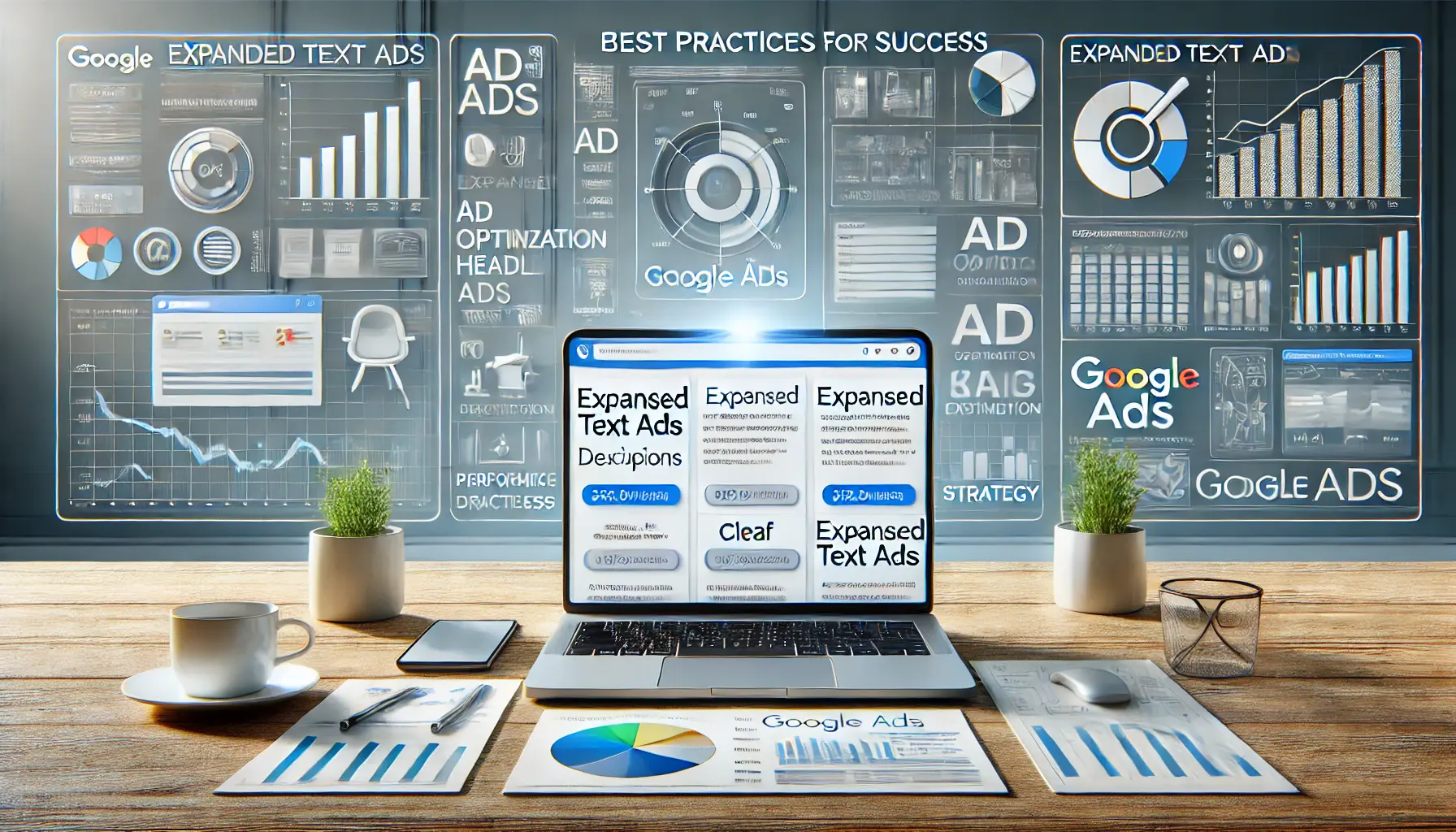
Illustrating best practices for success in digital advertising, emphasizing ad optimization, strategy, and performance metrics.
Best Practices for Success
- Craft compelling headlines and descriptions using relevant keywords and action-oriented language.
- Leverage ad extensions effectively to provide additional information and enhance visibility.
- Optimize ads for both mobile and desktop platforms to ensure seamless user experiences across devices.

undefined
Preparing for the Future
Advertisers must stay ahead of emerging trends to remain competitive.
Integration of AI, enhanced personalization, mobile optimization, and adherence to data privacy regulations are expected to shape the future of Expanded Text Ads.
By adapting strategies to incorporate these trends, businesses can achieve greater engagement and better ROI.

Representing the final phase of digital advertising campaigns, symbolizing reflection, review, and strategic planning.
Final Thoughts
The year 2024 will take Expanded Text Ads to the next level, refining advertiser campaigns for improved performance.
Whether it’s exploring new features, comparing ad formats, or planning for further developments, staying informed and proactive is key.
Set your campaigns up for success within this ever-evolving digital advertising landscape by leveraging the insights and best practices discussed in this article.
Key takeaways for 2024 include leveraging new features like interactivity and AI-driven automation while staying ahead of emerging trends to refine advertising strategies.
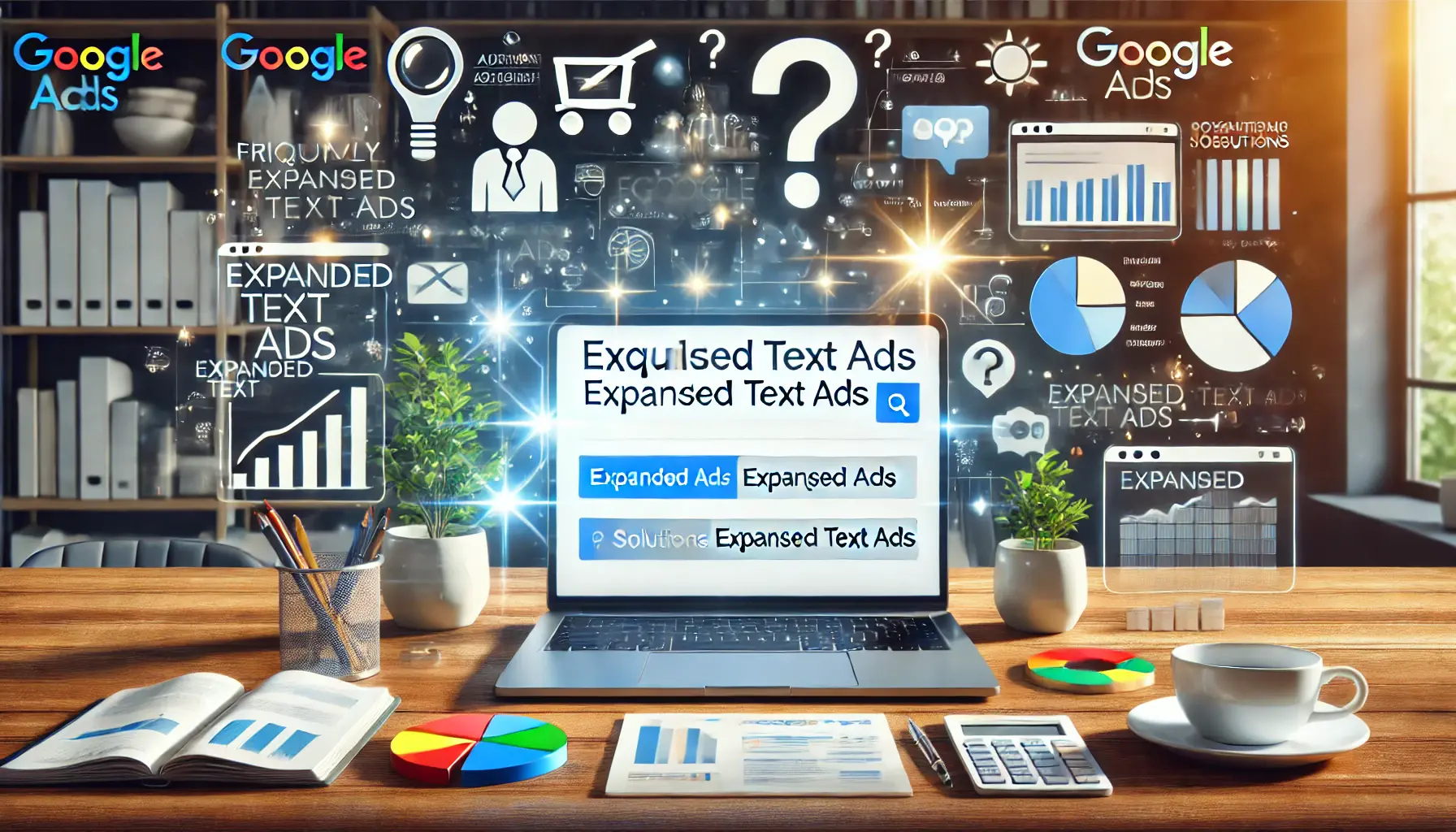
Illustrating frequently asked questions about Expanded Text Ads, with a focus on resolving common inquiries and clarifying details.
Your campaigns can be managed by an agency specialized in Google Ads, check out our service page.
Frequently Asked Questions about Expanded Text Ads
As digital advertising evolves, understanding Expanded Text Ads (ETAs) is crucial.
Below are common questions and concise answers to help you navigate ETAs effectively.
Expanded Text Ads are a type of search ad format in Google Ads that provide more space for advertisers to convey their message, including multiple headlines and longer descriptions, enhancing visibility and engagement.
Expanded Text Ads offer additional characters and multiple headlines compared to standard text ads, allowing for more detailed and compelling messaging to attract potential customers.
As of 2024, Google has phased out the creation and editing of Expanded Text Ads, encouraging advertisers to use Responsive Search Ads for more dynamic and flexible ad experiences.
Yes, existing Expanded Text Ads can continue to run; however, you cannot create or edit them.
It’s advisable to transition to Responsive Search Ads for future campaigns.
Responsive Search Ads allow for dynamic ad creation by combining multiple headlines and descriptions, enabling Google’s machine learning to optimize ad performance based on user search queries.
To optimize your ads, focus on crafting compelling headlines, utilizing relevant keywords, leveraging ad extensions, and regularly analyzing performance metrics to make informed adjustments.
Artificial Intelligence enhances ad targeting and personalization by analyzing user behavior and preferences, enabling more relevant and effective advertising strategies.
Mobile optimization is crucial, as a significant portion of users access content via mobile devices.
Ensuring ads are mobile-friendly enhances user experience and engagement.
Ad extensions provide additional information, such as site links or call buttons, increasing ad visibility and offering more opportunities for user interaction.
